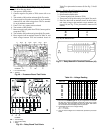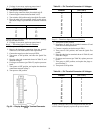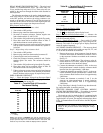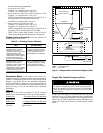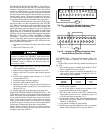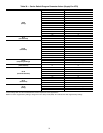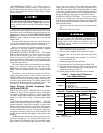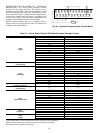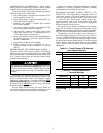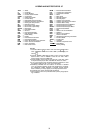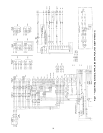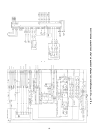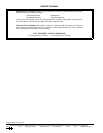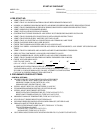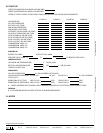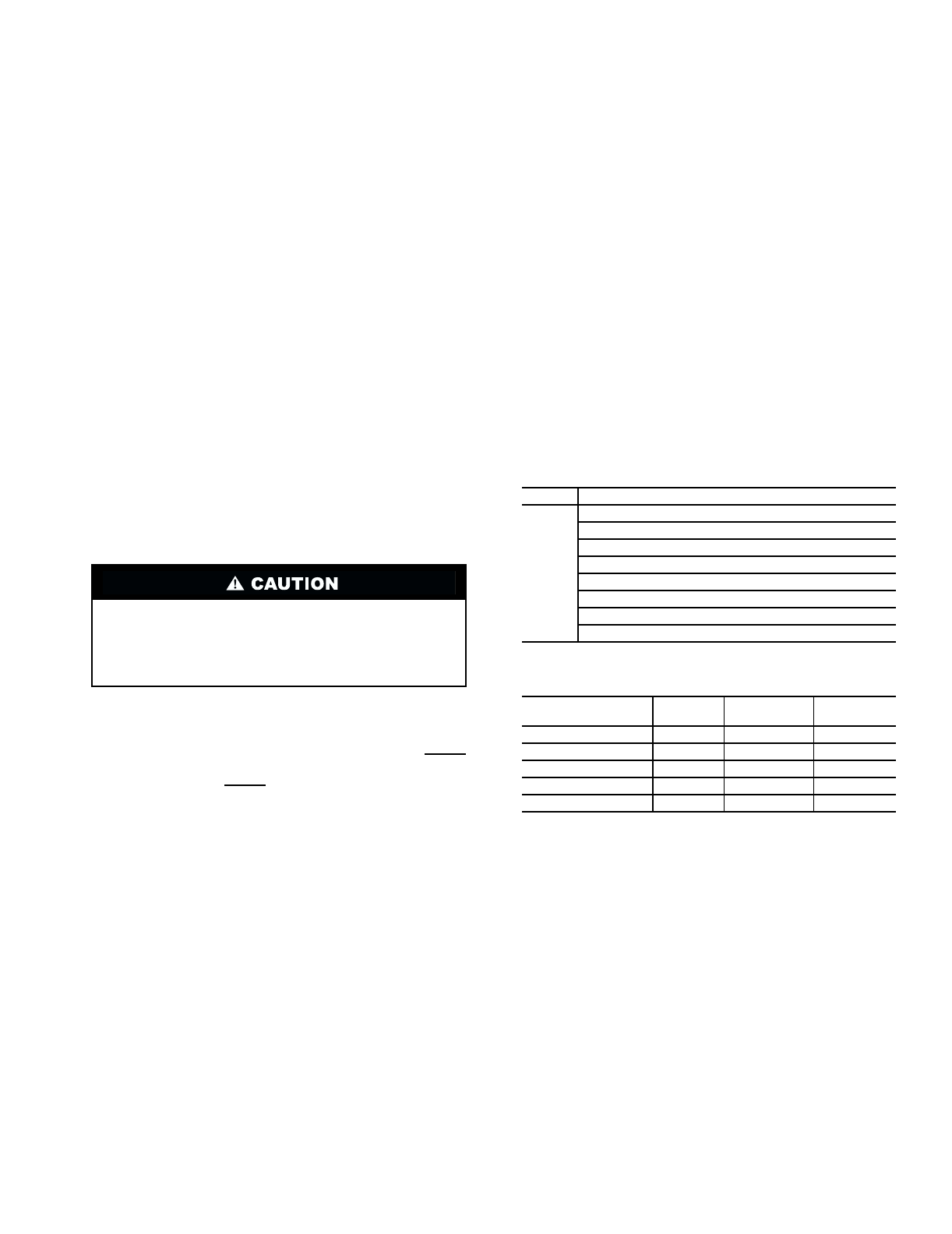
57
POWER EXHAUST VFD OPERATION — When trouble-
shooting the power exhaust VFD, check first that all required
conditions for power exhaust VFD operation are satisfied.
For the power exhaust VFD to run, the following conditions
must be met at the power exhaust VFD:
1. Drive enable jumper is installed from terminals ST-CC
(factory supplied) (see Fig. 56).
2. Proper rotation jumper is installed at terminals R-CC (re-
verse rotation, factory supplied).
3. Emergency stop jumper is installed from terminals
S4-CC (factory supplied).
4. A 4 to 20 mA signal is applied across terminals IV-P24
(from pressure transducer, factory supplied).
5. DIP switch SW1 (located on the VFD’s printed circuit
control panel) must be set to “I” (indicating usage of a 4
to 20 mA input signal at terminals “IV”).
6. Speed Control (located on the VFD’s keypad/display) set
for “Remote” (press the “Speed Ctrl” button until LED
“Remote” is illuminated).
7. Programmed according to Carrier defaults.
8. Building Pressure set point established by user, or
use factory default (30 Hz indicating 0.0 in. wg) (see
Table 15).
POWER EXHAUST VFD OPERATIONAL STATUS —
The power exhaust VFDs contain extensive self-diagnostic
functions which are accessed through the power exhaust VFD
display panel (located on the front of the power exhaust VFD
or at a remote location when the accessory remote display
package has been installed.)
When power is first supplied to the power exhaust VFD, the
display automatically starts with the frequency monitor func-
tion of its standard monitor mode. In the frequency monitor
function, the output frequency is displayed. Push the S/P/M
(Setup/Program/Monitor) key to switch to the Mode Selec-
tion menu. Push the S/P/M
key again to toggle the display
back to the standard monitor mode.
From the Mode Selection menu, the service person can
view all of the monitored status variables, including up to four
user-selected variables and any trip history in the memory.
Refer to the separate VFD Operation Manual for detailed
instructions on accessing diagnostic information, initiating
troubleshooting, and clearing any trip history.
RESTORING FACTORY POWER EXHAUST VFD
DEFAULTS — The original factory configuration values are
saved in the memory of the power exhaust VFD and can be
restored by the service person if required. There are two types
of saved file data: Carrier-factory settings (factory pro-
grammed settings made to the power exhaust VFD which
apply specifically to the unit it is installed on) and standard
defaults for general Carrier unit use.
The Carrier-factory settings are maintained as user settings.
These can be restored by entering the Setup mode (in the
S/P/M menu) and setting parameter tYP = 6 on the keypad/dis-
play. This will recall the specific factory defaults for this unit.
Occasionally it may be necessary to restore the power ex-
haust VFD defaults to the general Carrier use values. These are
stored in an OPTION ROM (read-only memory chip). Howev-
er, some variables may need to be manually changed to match
the specific unit’s factory default settings. To recall the general
Carrier defaults, enter the Setup mode and set parameter
tYP = 3. Refer to Tables 34 and 35 for items requiring manual
adjustment.
Table 34 — Power Exhaust VFD Required
User Adjusted Defaults
Table 35 — Power Exhaust Motor
Overload Settings
Unit Wiring —
A typical wiring schematic is shown in
Fig. 57.
If using the VFD display panel, disconnect all power to
the unit and the VFD before entering unit, or use the
accessory remote display module. Disable supply fan and
motor operation before accessing VFD-mounted display
module.
UNIT ITEM
ALL
Motor Overload Settings (See Table 35)
Gr.St/Ot1 = 4
Gr.St/Ot2 = 2
Gr.St/Ot2d = 5
Gr.St/Ot2H = 100
Gr.St/LF = 15
SEtP/UL = 59.8
SEtP/P4 = 98
MODEL NUMBER
POSITION 16
TOTAL
HP
MOTOR HP
(ea)
tHr1
SETTING
H, T
20 10 97.3
J, V
30 15 100.0
K, W
40 20 100.0
L, X
50 25 93.5
M, Y
60 30 92.3



